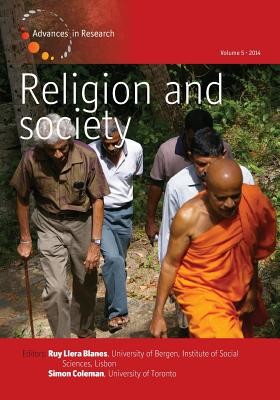
- We will send in 10–14 business days.
- Publisher: Berghahn Books
- Year: 2014
- Pages: 292
- ISBN-10: 1782384774
- ISBN-13: 9781782384779
- Format: 17.8 x 25.4 x 1.6 cm, softcover
- Language: English
- SAVE -10% with code: EXTRA
Religion and Society (e-book) (used book) | bookbook.eu
Reviews
Description
Gananath Obeyesekere calls his contribution to this volume a peon to 'foolishness'. But this is a fertile foolishness that implies a positive freedom to engage passionately in comparison, to avoid disciplinary overspecialization, to understand that the non-rational need not imply the irrational, and to acknowledge the power of art and literature as potential inspirations for our work. These themes of creativity and engagement echo through this volume's discussions of orthodoxy, aesthetics, and the ambivalences that surround religious authority and leadership. A special section on pilgrimage to Holy Land sites examines sacred space, place, and narrative as expressions of knowledge and power, while Birgit Meyer's inaugural lecture at the University of Utrecht calling for a material approach to religion elicits a number of constructive responses from scholars in art history, anthropology, and religious studies. The volume is rounded out by a teaching section exploring the dynamics of teaching the anthropology of Christianity in a seminary and reviews of recent literature in the anthropology of religion and related studies.
EXTRA 10 % discount with code: EXTRA
The promotion ends in 8d.00:41:04
The discount code is valid when purchasing from 10 €. Discounts do not stack.
- Publisher: Berghahn Books
- Year: 2014
- Pages: 292
- ISBN-10: 1782384774
- ISBN-13: 9781782384779
- Format: 17.8 x 25.4 x 1.6 cm, softcover
- Language: English English
Gananath Obeyesekere calls his contribution to this volume a peon to 'foolishness'. But this is a fertile foolishness that implies a positive freedom to engage passionately in comparison, to avoid disciplinary overspecialization, to understand that the non-rational need not imply the irrational, and to acknowledge the power of art and literature as potential inspirations for our work. These themes of creativity and engagement echo through this volume's discussions of orthodoxy, aesthetics, and the ambivalences that surround religious authority and leadership. A special section on pilgrimage to Holy Land sites examines sacred space, place, and narrative as expressions of knowledge and power, while Birgit Meyer's inaugural lecture at the University of Utrecht calling for a material approach to religion elicits a number of constructive responses from scholars in art history, anthropology, and religious studies. The volume is rounded out by a teaching section exploring the dynamics of teaching the anthropology of Christianity in a seminary and reviews of recent literature in the anthropology of religion and related studies.


Reviews